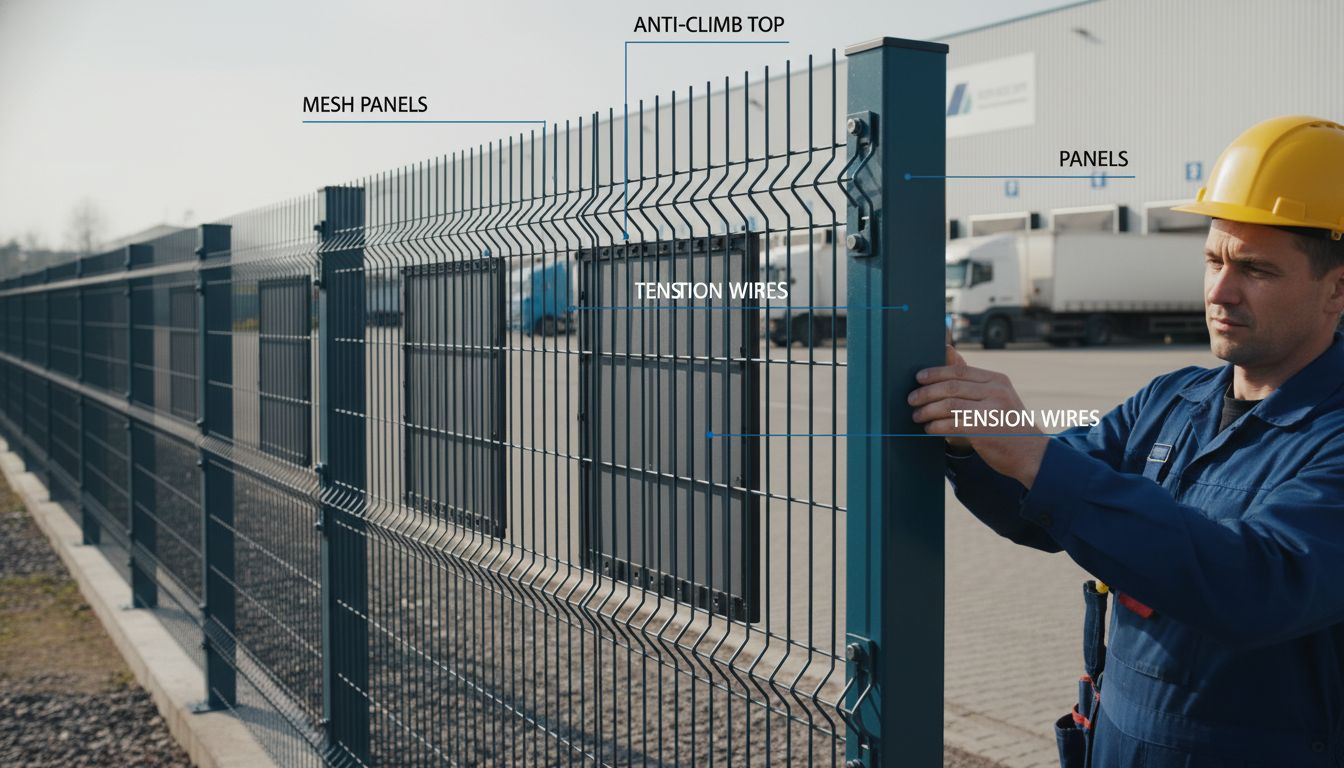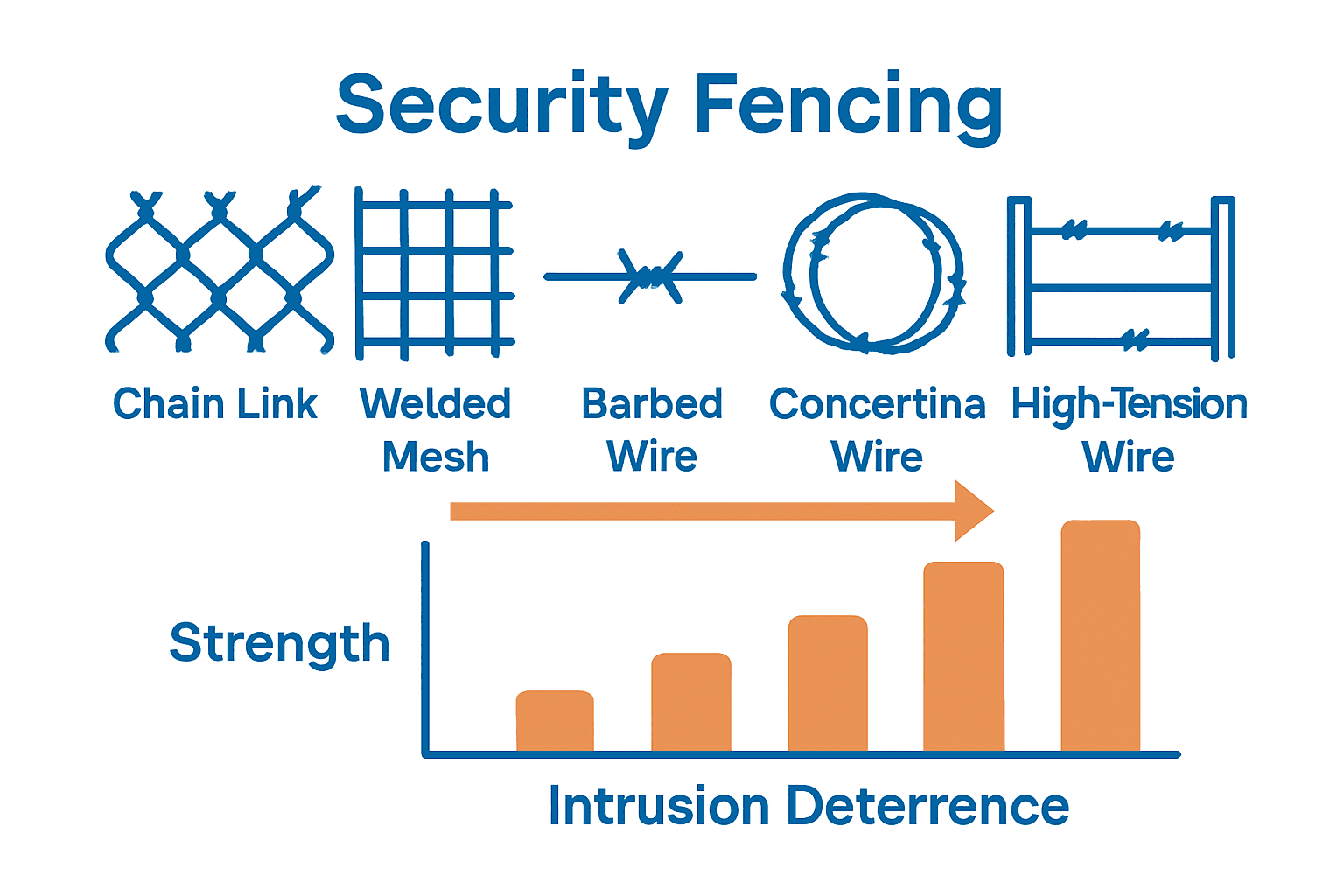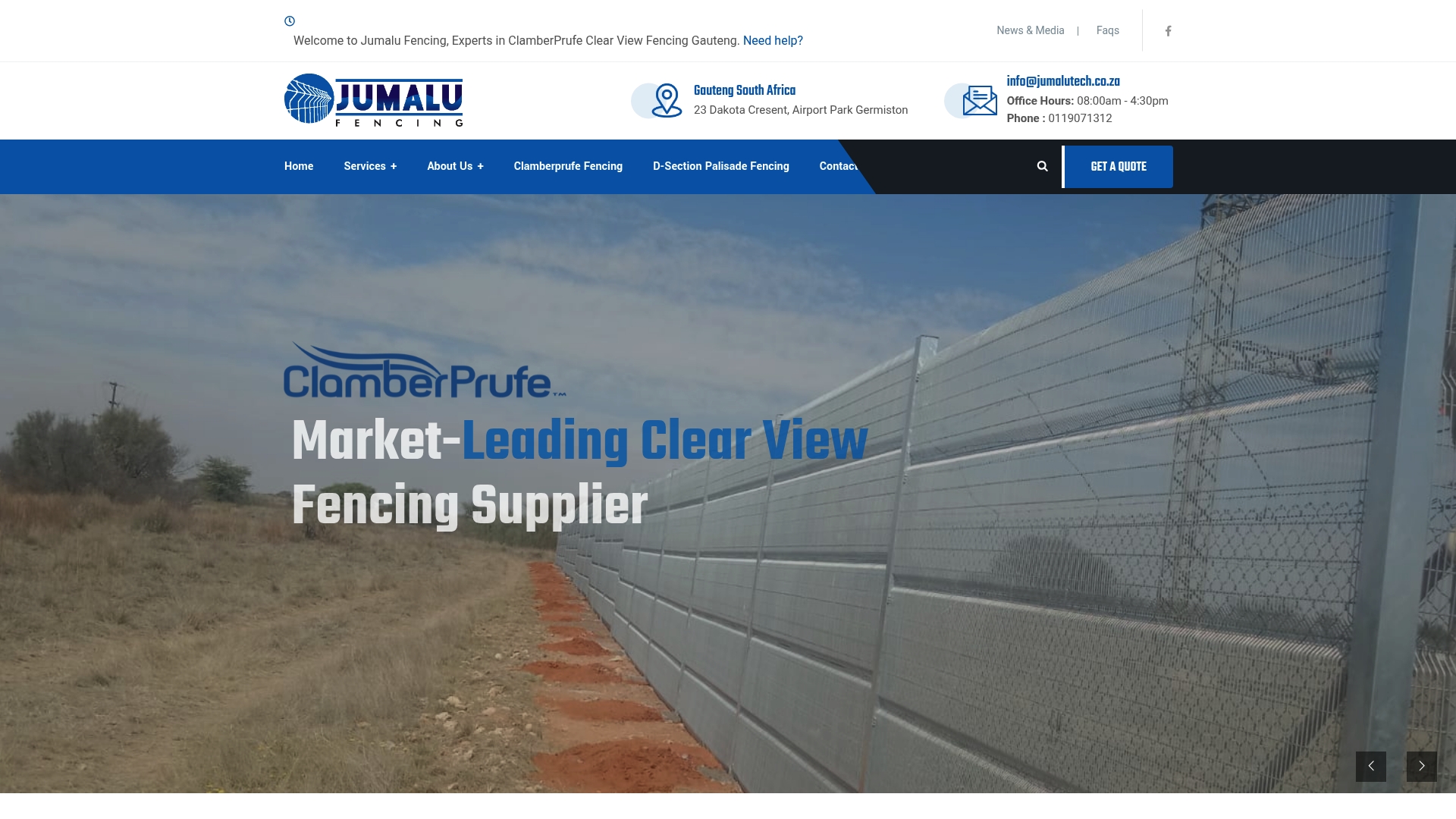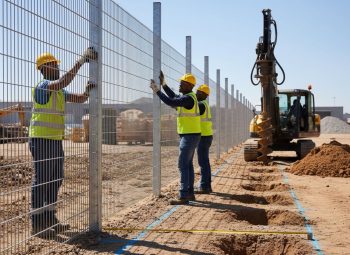Most people are surprised to learn that a single missing feature in security fencing can reduce its effectiveness by more than 50 percent. As threats evolve and property risks increase, understanding the terminology and components of security fencing is no longer just for construction experts. Clear definitions and correct usage help property managers and security teams choose the right solutions, minimize costly errors, and ensure every part of their perimeter stands up to real-world challenges.
Table of Contents
- Defining Security Fencing Terminology Clearly
- Major Types And Variations Explained
- Key Features And Industry Standards
- Common Materials And Fencing Grades
- Installation Challenges And Cost Implications
- Avoiding Common Security Fencing Mistakes
Key Takeaways
| Point | Details |
|---|---|
| Understanding Security Fencing | Security fencing involves various materials and components engineered to enhance perimeter protection against unauthorized access. |
| Key Fencing Types | Different types of fencing, such as chain link and welded mesh, cater to specific security needs and environments. |
| Industry Standards | Security fencing must adhere to performance standards regarding strength, durability, and resistance to ensure reliable protection. |
| Installation Factors | Successful installation requires consideration of terrain, soil composition, and compliance with regulations to avoid future complications. |
Defining Security Fencing Terminology Clearly
Security fencing represents a complex landscape of technical components designed to protect physical spaces from unauthorized access. Security fencing encompasses various specialized materials and construction techniques engineered to prevent intrusion and enhance perimeter protection.
Security Fencing Components typically include several critical elements that work together to create a robust barrier:
- Mesh Panels: Interconnected wire sections providing structural integrity
- Support Posts: Vertical structures anchoring the fence system
- Tension Wires: Horizontal reinforcement preventing panel distortion
- Fastening Hardware: Specialized connectors ensuring panel stability
- Anti-Climb Features: Designed to prevent vertical scaling attempts
Understanding these fundamental components is crucial for selecting an appropriate security fencing solution.
 Our guide on understanding mesh fencing provides deeper insights into how these elements interact to create effective perimeter protection.
Our guide on understanding mesh fencing provides deeper insights into how these elements interact to create effective perimeter protection.
The terminology surrounding security fencing reflects its technical sophistication. Professional installers distinguish between various fence types based on specific performance characteristics such as tensile strength, weather resistance, and penetration prevention. By comprehending these technical distinctions, property managers and security professionals can make informed decisions about implementing the most suitable fencing solution for their unique security requirements.
Major Types and Variations Explained
Security fencing encompasses multiple specialized variations designed to address diverse protection requirements. Security fencing materials range from basic chain link configurations to sophisticated anti-intrusion systems, each engineered with specific defensive capabilities.
Primary Security Fencing Types include:
- Chain Link Fencing: Economical and versatile perimeter solution
- Welded Mesh Fencing: High strength and uniform structural integrity
- Barbed Wire Fencing: Designed for high-security zones with deterrent features
- Concertina Wire Systems: Aggressive anti-penetration barriers
- High-Tension Wire Fencing: Advanced perimeter protection with enhanced resilience
Our comprehensive guide on welded mesh fencing provides in-depth insights into one of the most robust security fencing technologies available. Professional security designers carefully select these variations based on specific environmental conditions, threat levels, and spatial constraints.
Each fencing type presents unique advantages and limitations. Chain link fences offer visibility and cost-effectiveness, while welded mesh systems provide superior structural strength. Barbed wire configurations deliver aggressive deterrence, making them ideal for high-risk zones requiring immediate intrusion prevention. Understanding these nuanced differences allows security professionals to implement precisely tailored perimeter protection strategies that align with their specific security objectives.
Key Features and Industry Standards
Security fencing is governed by a complex set of technical specifications and performance standards that ensure reliable perimeter protection. According to CDSE, industry standards meticulously define critical parameters for material strength, durability, and intrusion resistance across various security fencing configurations.
Essential Industry Performance Standards encompass several key evaluation criteria:
- Tensile Strength: Minimum resistance to pulling and stretching forces
- Corrosion Resistance: Protection against environmental degradation
- Impact Resilience: Ability to withstand physical penetration attempts
- Wire Gauge Specifications: Precise material thickness requirements
- Load-Bearing Capacity: Structural integrity under extreme conditions
Our comprehensive anti-cut fencing guide provides additional insights into how these technical standards translate into practical security solutions. Professional security engineers rigorously assess these parameters to develop fencing systems that meet stringent protective requirements.
Beyond technical specifications, industry standards also address installation protocols, material quality certifications, and systematic performance evaluations. Compliance with these standards ensures that security fencing delivers consistent, reliable protection across diverse environments, from industrial complexes to high-security government facilities. By adhering to these comprehensive guidelines, security professionals can design perimeter solutions that provide robust, predictable defense against potential intrusions.

Common Materials and Fencing Grades
Security fencing materials represent a critical foundation for effective perimeter protection, with each grade and composition offering unique defensive capabilities. According to CDSE, security fencing materials are classified across multiple grades that determine their structural performance, durability, and intrusion resistance.
Primary Security Fencing Materials include:
- Galvanized Steel: Highest corrosion resistance and structural integrity
- Aluminum: Lightweight with excellent weather resilience
- Stainless Steel: Superior strength and long-term durability
- High-Tensile Wire: Enhanced elasticity and penetration resistance
- Coated Steel Mesh: Additional protective layering against environmental degradation
Our comprehensive guide on mesh fencing types offers deeper insights into the nuanced characteristics of these materials. Professional security designers meticulously select materials based on specific environmental conditions, threat levels, and performance requirements.
Fencing grades are typically categorized by thickness, coating quality, and tensile strength, with industrial and high-security applications demanding premium-grade materials. Material selection involves complex considerations including corrosion resistance, structural load-bearing capacity, and long-term maintenance requirements. By understanding these sophisticated material distinctions, security professionals can design perimeter solutions that provide robust, predictable protection tailored to unique operational environments.
Installation Challenges and Cost Implications
Security fencing installation represents a complex process involving multiple technical and financial considerations that can significantly impact overall project outcomes. According to CDSE, installation challenges vary widely depending on terrain, environmental conditions, and specific security requirements, each introducing unique cost implications and technical complexities.
Key Installation Challenges typically include:
- Terrain Variability: Uneven ground requiring specialized foundation techniques
- Soil Composition: Different ground conditions affecting post-installation stability
- Environmental Constraints: Weather and geographical limitations
- Technical Complexity: Advanced security requirements demanding precision
- Regulatory Compliance: Meeting local building and security standards
Our comprehensive guide on commercial security fencing benefits provides additional context for understanding these intricate installation dynamics. Professional security integrators must carefully evaluate multiple factors to develop cost-effective and technically robust perimeter solutions.
Cost implications extend beyond initial material expenses, encompassing long-term maintenance, potential future modifications, and the critical balance between initial investment and sustained security effectiveness. Financial planning requires a holistic approach that considers not just upfront costs, but the entire lifecycle of the security fencing system. By understanding these nuanced financial and technical challenges, organizations can make strategic decisions that optimize security infrastructure while maintaining fiscal responsibility.
Avoiding Common Security Fencing Mistakes
Navigating the complex landscape of security fencing requires strategic decision-making to prevent costly errors that compromise perimeter protection. According to CDSE, security professionals frequently encounter critical mistakes that can significantly undermine fence effectiveness and overall site security.
Most Prevalent Security Fencing Mistakes include:
- Inadequate Material Selection: Choosing inappropriate materials for specific environmental conditions
- Poor Foundation Preparation: Neglecting ground stabilization and proper post installation
- Insufficient Height Calculations: Underestimating intrusion prevention requirements
- Overlooking Maintenance Protocols: Failing to plan for long-term structural integrity
- Disregarding Local Regulatory Standards: Non-compliance with regional security guidelines
Our guide on anti-climb and anti-cut designs provides additional insights into advanced security considerations. Professional security designers must meticulously evaluate each potential vulnerability to create comprehensive protective solutions.
Mitigating these risks requires a holistic approach that combines technical expertise, strategic planning, and continuous assessment. Risk management involves understanding that security fencing is not a one-size-fits-all solution, but a nuanced system requiring customized design, precise implementation, and ongoing maintenance. By proactively identifying and addressing potential mistakes, organizations can develop robust perimeter security that adapts to evolving threat landscapes and environmental challenges.
Secure Your Perimeter with Expert Knowledge and Proven Solutions
Understanding complex security fencing terminology can feel overwhelming. The article highlights the challenge of selecting the right materials and designs that provide durable protection against intrusion while meeting specific environmental and regulatory standards. You want fencing that offers reliable anti-climb and anti-cut features, outstanding tensile strength, and seamless visibility without compromising your property’s aesthetics or safety.
At Jumalu Tech, we bring this expertise directly to you with specialized solutions like ClamberPrufe Clear View Fencing designed to meet those exact requirements. Our range includes premium High Security Fencing and Mesh Panel Fencing that are engineered for maximum resilience and long-lasting performance in South African conditions. Trust our team for professional manufacturing, supply, and installation backed by experience and quality assurance.
Are you ready to transform your property with fencing that speaks the language of strength and security today

Discover how Jumalu Tech can secure your boundaries with innovative fencing solutions tailored to your unique needs. Visit https://jumalutech.co.za now for expert advice, detailed product information, and a personalised quotation to protect what matters most.
Frequently Asked Questions
What are the main components of security fencing?
Security fencing typically includes mesh panels, support posts, tension wires, fastening hardware, and anti-climb features that work together to create a robust barrier.
What are the different types of security fencing available?
The primary types of security fencing include chain link fencing, welded mesh fencing, barbed wire fencing, concertina wire systems, and high-tension wire fencing, each designed for specific security needs and levels of protection.
What industry standards are relevant for security fencing?
Industry standards for security fencing include performance criteria such as tensile strength, corrosion resistance, impact resilience, wire gauge specifications, and load-bearing capacity to ensure reliable perimeter protection.
What are common mistakes to avoid when installing security fencing?
Common mistakes include inadequate material selection, poor foundation preparation, insufficient height calculations, neglecting maintenance protocols, and disregarding local regulatory standards, all of which can compromise the effectiveness of security fencing.
Recommended
- 7 Essential Types of Mesh Fencing for Secure Properties – Jumalu Fencing
- Exploring the Top Mesh Panel Fencing Types for Ultimate Security: ClamberPrufe Clear View Fencing Takes the Lead – Jumalu Fencing
- Commercial Security Fencing Benefits: Complete Guide South Africa – Jumalu Fencing
- Understanding the Definition of Mesh Fencing – Jumalu Fencing




